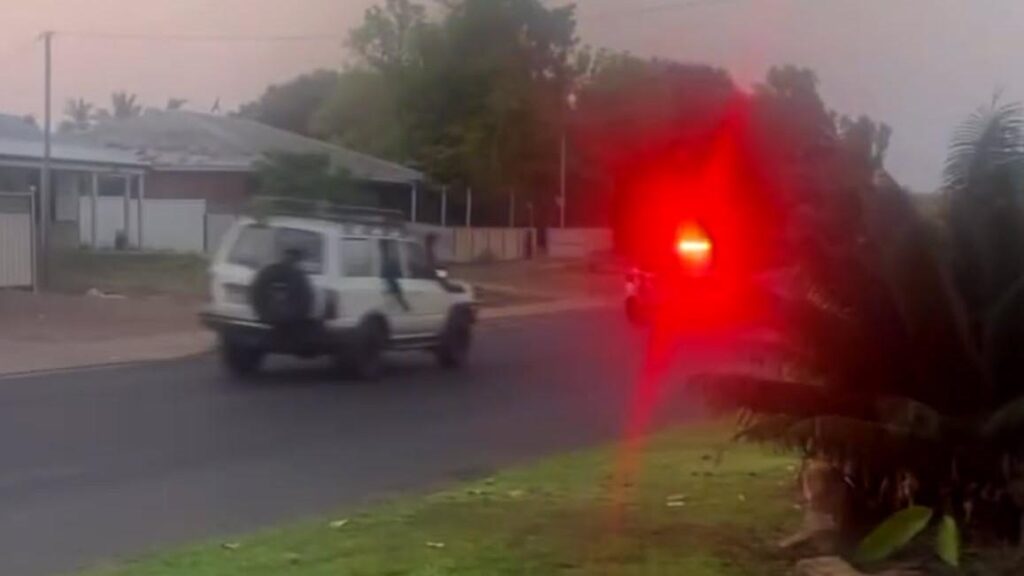
A bizarre car-stealing rampage involving kids has unfolded in Kununurra, with shocking video showing a police car being chased by at least one stolen vehicle.
The community of Kununurra is grappling with a surge in juvenile crime, prompting local leaders and officials to call for urgent reforms. Recent arrests, including that of a ten-year-old allegedly driving a stolen car during a police chase, underscore the challenges facing the region. Advocates argue that the current system is failing, with calls to remove at-risk children from unsafe environments adding to the debate over the best approach to tackle this escalating issue.
According to the State’s independent children’s commissioner, Jacqueline McGowan-Jones, the rise in juvenile crime is indicative of a need for better support systems aimed at intervening before children reach crisis points. McGowan-Jones emphasized the importance of collaboration among state agencies, urging them to focus on aiding struggling parents instead of placing blame. “When there’s a 10-year-old in the car who’s probably with older siblings and that is the safest place they can be at the time, that is a sad indictment,” she remarked.
The situation escalated further when former police commissioner Karl O’Callaghan suggested that the government must consider removing child offenders from their homes to protect them and the community. He described the current state of affairs as “woke rot” and called for a more stringent approach to juvenile crime. In response, Paul Papalia, the Corrective Services Minister, acknowledged the need for a tougher stance but clarified that serious offenders should face detention. Papalia asserted that the focus should be on those whose behaviour could be rehabilitated through intervention rather than punishment.
Community leaders, including Adrian McCann, chief executive officer of the Kununurra Waringarri Aboriginal Corporation, contend that the crime wave reflects a broken system, exacerbated by a lack of housing and insufficient government funding for local programs. He noted a significant increase in youth presence on the streets, correlating with a rise in car thefts and other offenses. “Definitely street presence has peaked and hasn’t peaked like this for a number of years,” McCann said.
The community’s concerns are further compounded by the limited availability of services during nighttime, which is when most crimes occur. Local advocates highlight a dire need for more resources to support youth during these hours. A $6 million Night Space program, aimed at engaging young people on the streets during late hours, is set to launch in Kununurra next year. This initiative has shown promise in other Kimberley regions, such as Broome and Fitzroy Crossing.
McGowan-Jones has called for a reallocation of resources, suggesting that investing in family and community safety could prove more beneficial than the current expenditure on juvenile detention. “Imagine if, instead of spending $1 million a year to keep a child in custody, we spent it making the family and community safer,” she proposed. With approximately 80 children in custody daily, this could translate to an annual spending of $80 million on prevention initiatives.
The situation in Kununurra is indicative of broader issues within the juvenile justice system, where community voices are advocating for a shift towards preventative measures rather than punitive actions. As discussions continue, local leaders emphasize the need for a comprehensive strategy that prioritizes the welfare of children and the safety of the community.






